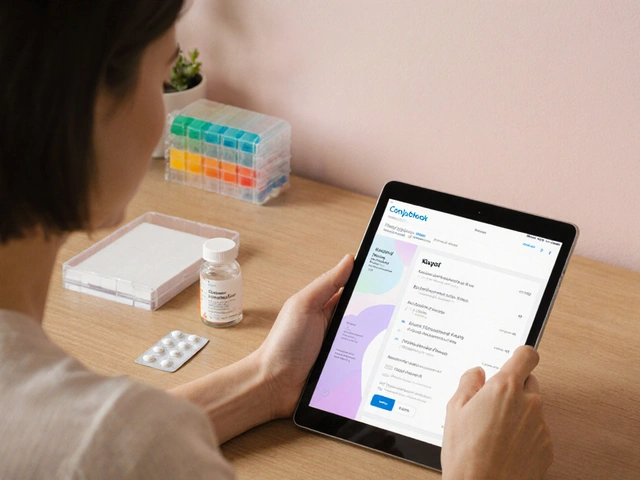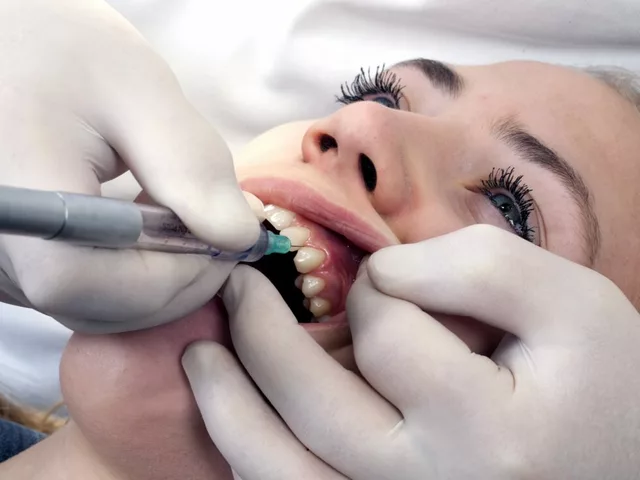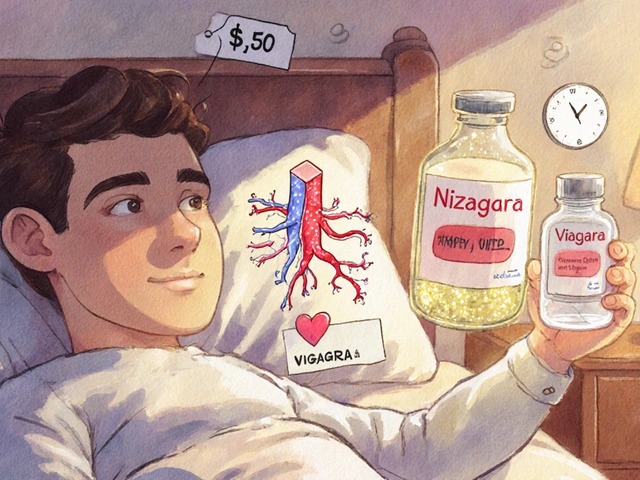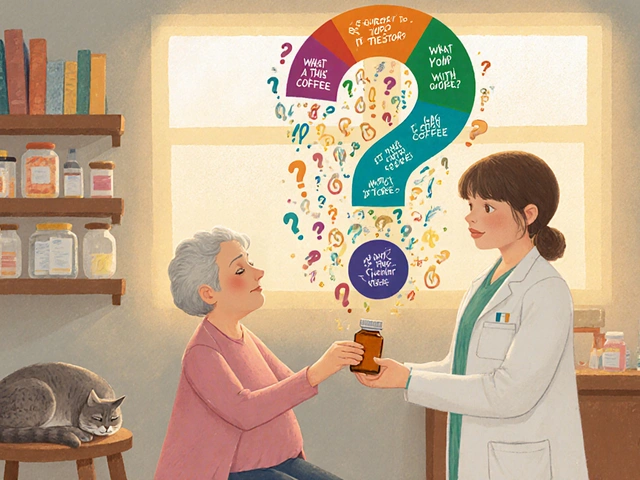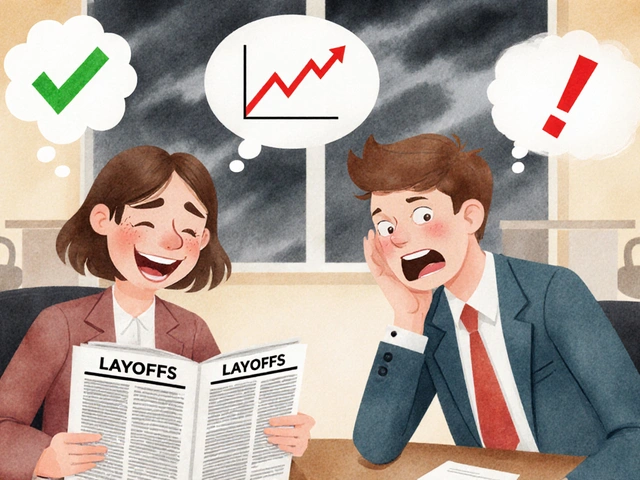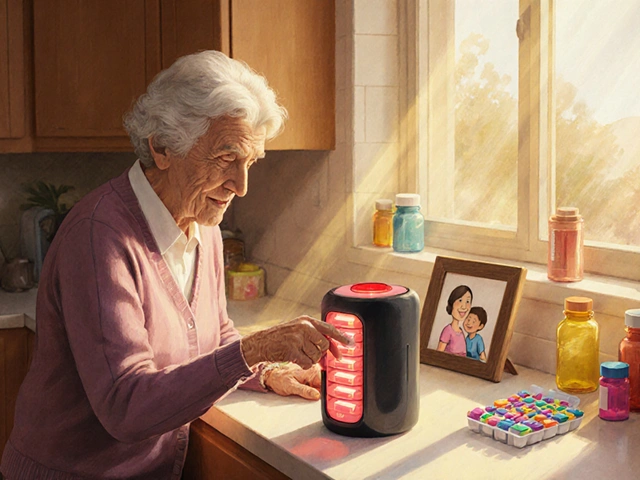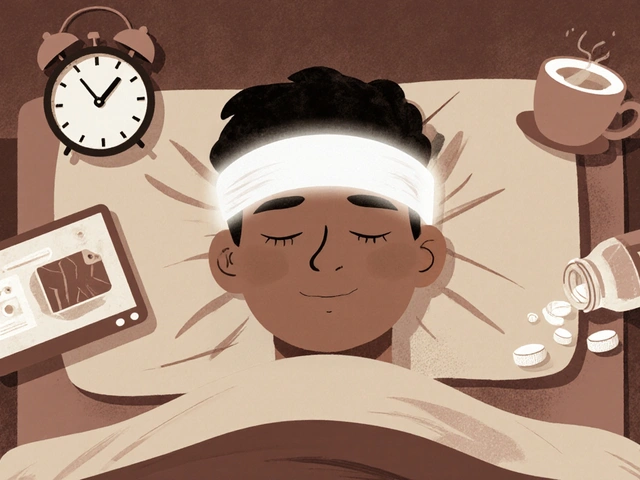20
Blue Light and Eye Health: Screen Filters and Habits That Actually Work
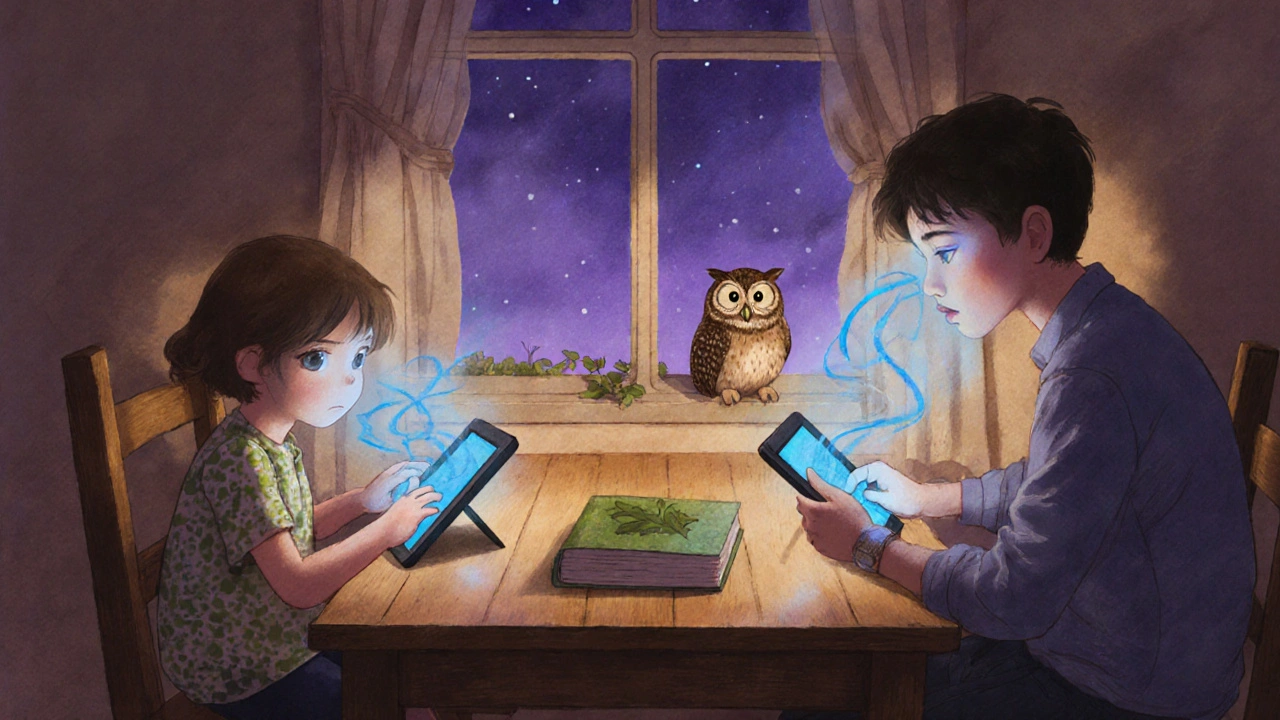
Staring at screens all day? You’re not alone. The average person in 2025 spends nearly 7 hours daily on digital devices. And while your eyes don’t turn into glowing orbs from too much screen time, they do get tired - really tired. Dryness, headaches, blurry vision, even trouble falling asleep at night. These aren’t just "feelings." They’re real symptoms tied to how blue light interacts with your eyes and brain.
What Exactly Is Blue Light?
Blue light isn’t just the color of your phone screen. It’s a specific band of high-energy visible (HEV) light between 415 and 455 nanometers. This is the part of the spectrum with the shortest wavelength and highest energy in visible light. It’s naturally found in sunlight - which is why daylight keeps you alert. But now, we’re getting hit with it from LED screens, fluorescent lights, and even some LED bulbs at home.
Here’s the catch: your eye doesn’t block blue light like it does UV rays. It passes right through the cornea and lens, landing directly on the retina. Studies show that prolonged exposure to this specific range can trigger oxidative stress in retinal cells. One 2018 NIH study found that 24 hours of 450 nm blue light reduced corneal cell viability by over 37%. That’s not a typo. It’s not sci-fi. It’s lab data.
But here’s where it gets messy. The American Academy of Ophthalmology says there’s no proof blue light from screens causes permanent eye damage. Meanwhile, other experts - like those from Harvard and the NIH - point to clear biological mechanisms that suggest otherwise. So what’s going on?
Why Your Eyes Feel Fried After Screens
Most of what you feel isn’t from permanent damage. It’s from strain. Blue light scatters more easily than other colors, which means your eyes have to work harder to focus. That’s called chromatic aberration. It’s like trying to read a slightly out-of-focus book for hours. Your eye muscles tense up. Your blink rate drops by up to 60% when you’re staring at a screen. Less blinking = drier eyes.
That’s why 61% of adults report digital eye strain, according to The Vision Council. Symptoms? Dry eyes (64.7%), blurred vision (52.1%), headaches (48%), and watery eyes (28.3%). These aren’t signs of blindness. They’re signs of fatigue. And fatigue is reversible.
Do Blue Light Glasses Actually Help?
The market is flooded with them. Clear lenses that claim to filter blue light. Amber-tinted glasses that look like vintage goggles. Prescription lenses with built-in filters. They sold $3.12 billion worth in 2022.
But do they work?
Amber-tinted glasses? Yes - they block 65-100% of blue light in the 400-500 nm range. That’s powerful. But they also turn your screen yellow. For graphic designers, photographers, or anyone who needs accurate color, that’s a dealbreaker. One study found they reduced visual acuity by 8.3% in color-critical tasks.
Clear blue-light filtering lenses? Less so. Independent testing by Consumer Reports found they block only 12% of blue light - far less than the 20% many brands claim. And they don’t touch the most harmful 415-455 nm range.
Software filters like Night Shift or f.lux? They reduce blue light by 10-20%. Better than nothing. But they’re inconsistent. Many people turn them off during the day, forget to enable them on their tablet, or don’t sync them across devices. A 2022 study in Contact Lens and Anterior Eye found they helped reduce visual fatigue by 22% over two hours - but had zero effect on dry eye symptoms after four weeks.
Bottom line: Glasses might help if you’re sensitive to light or work late. But they’re not magic. And they’re not necessary for everyone.

What Actually Works: Habits Over Gadgets
Here’s the truth: the most effective way to protect your eyes isn’t a filter. It’s a habit.
The 20-20-20 rule - every 20 minutes, look at something 20 feet away for 20 seconds. Sounds simple. But it works. A 2021 study in Optometry and Vision Science showed it reduced eye strain by over 53%. Reddit users who stuck with it reported 78% less discomfort. Why? Because it forces your eyes to relax, re-focus, and blink normally.
Adjust your screen brightness. If your screen is brighter than your room, your eyes are working overtime. Match it to ambient light. Ideally, your workspace should be 300-500 lux. That’s about the brightness of an overcast day. Too dim? Too bright? Both cause strain.
Use night mode - but start early. Turning on Night Shift at 11 p.m. won’t help if you’ve been staring at a bright screen since 6 p.m. Harvard research shows blue light suppresses melatonin - the sleep hormone - for up to 105 minutes. Start your night mode two hours before bed. University of Toronto data shows this boosts melatonin by 58%.
Keep your distance. Hold your phone or tablet at least 16 inches away. For computers, aim for 20-30 inches. That reduces the focusing demand on your eyes by 3.7 diopters. That’s like giving your eye muscles a vacation.
The Sleep Connection
Blue light doesn’t just hurt your eyes - it messes with your brain’s clock. Your circadian rhythm runs on light cues. When your eyes detect blue light at night, your brain thinks it’s still daytime. Melatonin production drops. You stay alert. You delay sleep. You feel groggy the next day.
Harvard studies showed blue light shifted circadian rhythms by 3 hours - double the effect of green light. That’s why people who scroll in bed often wake up feeling like they didn’t sleep at all.
Fixing this isn’t about buying expensive glasses. It’s about setting boundaries. No screens in bed. Use a physical alarm clock. Read a paper book before sleep. If you must use your phone, enable night mode + reduce brightness + keep it at arm’s length.
Natural Protection: What You Can Eat
Here’s a lesser-known fact: your eyes have their own built-in blue light filters. Lutein and zeaxanthin - two antioxidants found in leafy greens, eggs, and corn - build up in the macula, the part of the retina most exposed to blue light.
A 2024 study in Nature Communications found that taking 10 mg of lutein and 2 mg of zeaxanthin daily increased macular pigment density by 0.12. That’s equivalent to wearing 25% blue-light-blocking lenses - without the yellow tint.
Spinach. Kale. Broccoli. Eggs. These aren’t just healthy. They’re protective. You don’t need supplements if you eat a colorful diet. But if you don’t, a daily supplement might be worth considering.

What’s Changing in 2025
The industry is shifting. Display manufacturers are building blue light reduction into screens - not as a software setting, but as hardware. OLED panels now reduce emissions in the 415-455 nm range by 30-40% without filters. Apple’s iOS 17.4 uses ambient light sensors to adjust color temperature automatically. Samsung’s 2025 roadmap aims for 50% reduction with less than 2% color distortion.
That means the future of blue light protection isn’t in glasses. It’s in your device. By 2028, sales of non-prescription blue light glasses could drop 18% annually, according to IDC. The market is moving from aftermarket fixes to built-in solutions.
Meanwhile, the FDA cleared the first medical device in 2023 - Lumineyes - that delivers white light therapy with almost no blue light. It’s for circadian disruption, not eye strain. But it shows the science is evolving.
Final Verdict: What Should You Do?
Forget the hype. You don’t need to spend $100 on blue light glasses unless you’re a night-shift worker or have extreme sensitivity.
Here’s your simple, science-backed plan:
- Follow the 20-20-20 rule religiously. Set a timer if you have to.
- Keep your screen at arm’s length - 20 inches or more.
- Match screen brightness to room lighting. No glowing screens in dark rooms.
- Enable night mode two hours before bed. Turn off all screens 30 minutes before sleep.
- Eat more leafy greens and eggs. Your retina will thank you.
- If you wear glasses, get lenses with an anti-reflective coating. That helps more than blue light filtering.
Blue light isn’t your enemy. But uncontrolled exposure - especially at night - is a stressor. Your eyes aren’t broken. They’re just tired. And tired eyes heal with rest, not filters.
What About Kids?
Children’s eyes are more transparent. Their lenses don’t filter blue light as well as adults’. The French health agency (ANSES) warns that exposure above 100 lux for kids under 3 may pose long-term risks. That’s not much - a dim nightlight can hit that level.
For kids under 12: limit screen time before bed. Use night mode. Avoid tablets in the dark. Encourage outdoor play - natural daylight helps regulate their developing circadian rhythms and may even slow myopia progression.
Don’t panic. Just be mindful. Kids don’t need blue light glasses. They need more time outside and less time glued to screens before bedtime.

